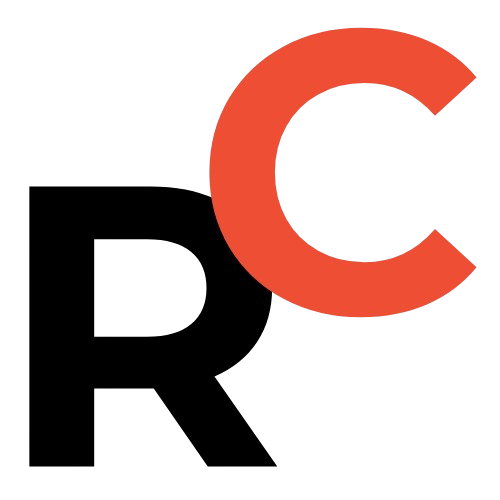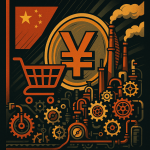Pig capacity controls are escalating as regulators order top hog producers to cut output.
Key Points
- Regulatory push: The Animal Husbandry and Veterinary Bureau of the Ministry of Agriculture and Rural Affairs (Nongye Nongcunbu 农业农村部) together with the National Development and Reform Commission (Guojia Fazhan He Gaige Weiyuanhui 国家发展和改革委员会) told leading firms — including Muyuan 牧原股份, Wenshi 温氏股份 and Shuangbaotai 双胞胎 — to lead cuts with assigned targets to reduce productive sows in 2026.
- Specific measures: Officials require reducing productive sows, lowering total slaughter volumes, and keeping slaughter weight around 120 kilograms, signaling a shift from soft guidance to directed herd reduction.
- Financial controls: Policy will be backed by tighter credit and reductions in subsidies to limit incentives for capacity expansion and new projects.
- Market signal: Domestic hog prices fell to ¥12.93 RMB/kg ($1.81 USD/kg) — the lowest in nearly a year — creating short-term financial pressure on large producers even as herd cuts could reduce supply over time.
- Productive Sows: Explicit reduction requirements.
- Slaughter Volumes: Lowering overall volumes.
- Slaughter Weight: Maintaining around 120 kg.

Regulators convene meeting — top hog firms attend
Multiple sources told reporters that on September 16 the Animal Husbandry and Veterinary Bureau of the Ministry of Agriculture and Rural Affairs (Nongye Nongcunbu 农业农村部) together with the National Development and Reform Commission (Guojia Fazhan He Gaige Weiyuanhui 国家发展和改革委员会) held a companies’ meeting on controlling pig production capacity.
Several leading hog producers attended, including Muyuan Foods (Muyuan 牧原股份), Wens Foodstuff Group (Wenshi 温氏股份) and Shuangbaotai (Shuangbaotai 双胞胎).

Resume Captain
Your AI Career Toolkit:
- AI Resume Optimization
- Custom Cover Letters
- LinkedIn Profile Boost
- Interview Question Prep
- Salary Negotiation Agent

Head firms must take the lead in cutting output — explicit targets for market leaders
According to a participant from one attending company, regulators made it explicit that market leaders should take the lead in capacity control.
Measures discussed and required include reducing the number of productive sows (nengfan mu zhu 能繁母猪), lowering total slaughter volumes, and keeping slaughter weight around 120 kilograms per animal.
The participant said that leading companies have been assigned targets to reduce their productive sow herds year‑over‑year in 2026.

New step: explicit reduction of productive sows — why this matters
Industry veterans told reporters this marks a step up from earlier guidance.
Previously, policy emphasis focused on controlling average slaughter weight and avoiding new capacity additions.
This meeting—coordinated with the National Development and Reform Commission—was the first time the central authorities explicitly required a reduction in the number of productive sows.
Market participants say this move goes beyond prior expectations and signals a shift from soft guidance to directed herd reduction.
Analysts expect that once the measures are implemented, the sector could register meaningful capacity declines.

Find Top Talent on China's Leading Networks
- Post Across China's Job Sites from $299 / role, or
- Hire Our Recruiting Pros from $799 / role
- Qualified Candidate Bundles
- Lower Hiring Costs by 80%+
- Expert Team Since 2014
Your First Job Post

Support measures: finance and subsidies tightened — limiting expansion incentives
The production controls will be accompanied by fiscal and financial measures designed to prevent capacity expansion.
These include stricter limits on credit extended for hog capacity expansion and reductions in subsidies that might incentivize increased production.
In practice, that means less capital for new barns, fewer incentives for rapid herd growth, and a higher bar for large projects seeking financing.

ExpatInvest China
Grow Your RMB in China:
- Invest Your RMB Locally
- Buy & Sell Online in CN¥
- No Lock-In Periods
- English Service & Data
- Start with Only ¥1,000

Market reaction: hog prices already weakening — short‑term price signal
Industry price monitoring shows pig prices have fallen steadily since the third quarter.
On September 18 domestic three‑way crossbred hog prices fell to ¥12.93 RMB per kilogram ($1.81 USD/kg).
That level is the lowest in nearly a year and is already below the cash‑breeding costs for some listed hog producers.
Price weakness today does not invalidate the likely long‑term effect of herd reductions, but it does increase near‑term financial pressure on large producers asked to cut output.

Prior regulatory messaging and next steps — implementation watch
The Ministry of Agriculture and other departments have previously held multiple pig‑capacity control meetings, reiterating the need to strictly implement capacity controls.
Guidance has included:
- Phase out productive sows reasonably.
- Trim productive sow inventories where appropriate.
- Cut secondary finishing (second‑time fattening).
- Limit slaughter weights for market hogs.
- Tightly control any new capacity additions.
Market watchers will be paying close attention to whether leading companies meet the 2026 reduction targets and to how quickly tighter credit and subsidy changes are enforced.

What this means for producers and consumers — quick takeaways
- For large producers: explicit directives and assigned reduction targets mean near‑term operational adjustments — from herd planning to slaughter weight management — and potential financial pressure from reduced throughput.
- For smaller farms: tighter credit and subsidy support could make expansion harder, accelerating consolidation in the sector and favoring vertically integrated players.
- For consumers: if capacity cuts are implemented and sustained, prices may eventually stabilize or rise; however, the timing depends on how quickly herd reductions and financial measures take effect.
Investor & founder playbook — actionable angles
Keep these signals on your radar if you’re investing, building, or marketing in the Chinese agri‑supply chain.
- Monitor company disclosures from major hog producers like Muyuan Foods (Muyuan 牧原股份) and Wens Foodstuff Group (Wenshi 温氏股份) for specific 2026 sow reduction targets and implementation timelines.
- Watch credit windows and subsidy announcements from local finance bureaus and the Ministry of Agriculture and Rural Affairs (Nongye Nongcunbu 农业农村部).
- Track slaughter weights and slaughter volume releases as early indicators of whether controls are being enforced.
- Plan for consolidation opportunities in feed, logistics, and slaughterhouse services as smaller farms face tighter financing.
- Prepare for price volatility in the near term, with potential stabilization or upward pressure if herd reductions materialize.
Linking opportunities — internal and external SEO targets
- Suggested internal links: China agriculture policy updates, hog price tracker, company profile: Muyuan Foods (Muyuan 牧原股份).
- Suggested external references to include on your site: Ministry of Agriculture and Rural Affairs homepage and National Development and Reform Commission briefings.
- Recommended anchor texts: productive sows policy, hog capacity controls, slaughter weight limits.
Bottom line for investors, founders, and operators: this is a policy shift toward deliberate hog herd reduction and tighter financial controls that could structurally lower supply over time while driving short‑term price and margin pressure.
Stay close to company filings, credit policy changes, and slaughter data to separate noise from the next sustainable supply signal.
Pig capacity controls



![China Signals Major Investment Push: Vice Premier He Lifeng Meets ADIA Chairman, Eyeing Deeper Economic Ties & New China Investment Opportunities [FreshFromChina]](https://freshfromchina.com/wp-content/uploads/2025/05/china-signals-major-investment-push-vice-premier-he-lifeng-meets-adia-chairman.png____FreshFromChina-150x150.png)


